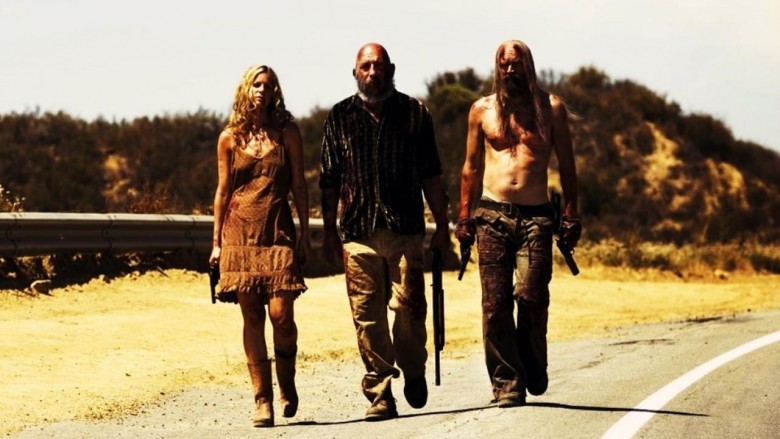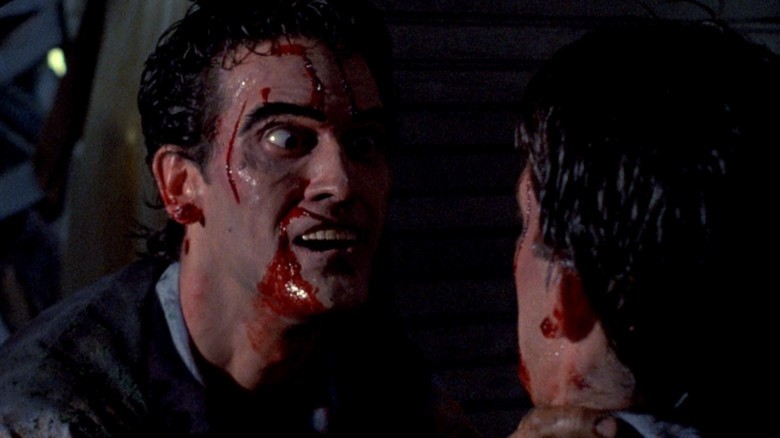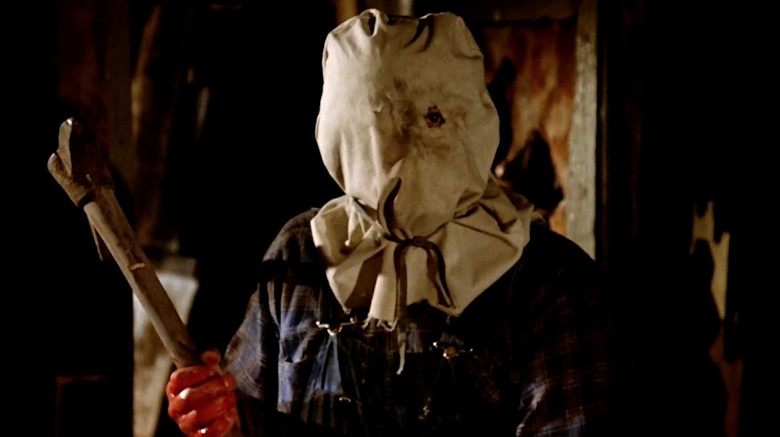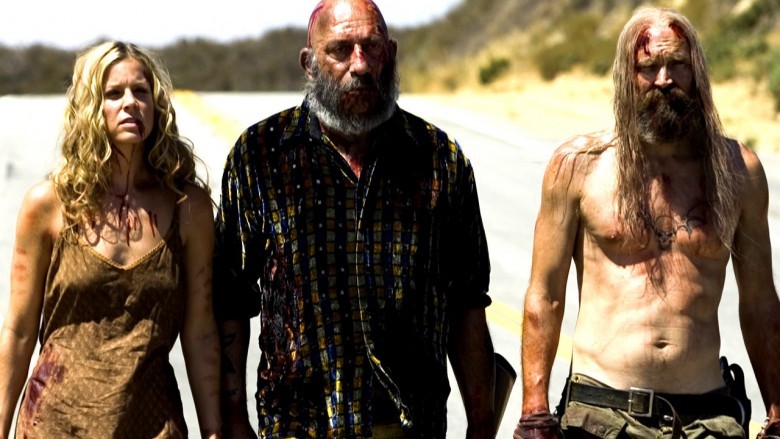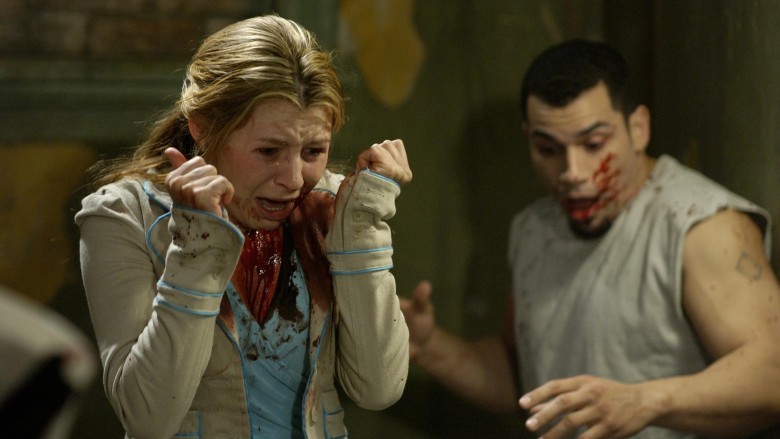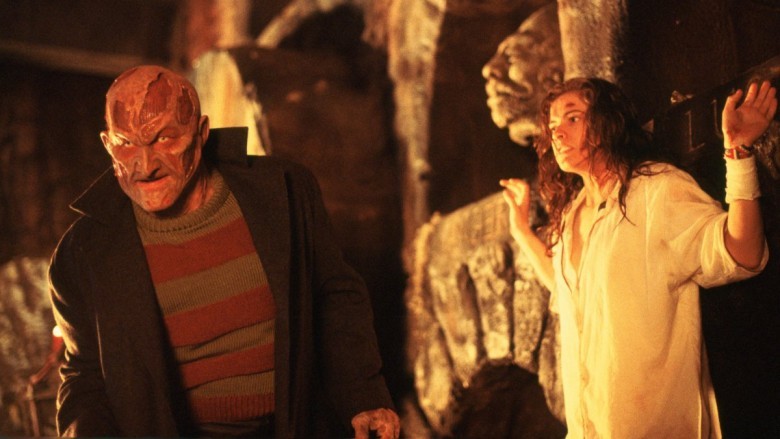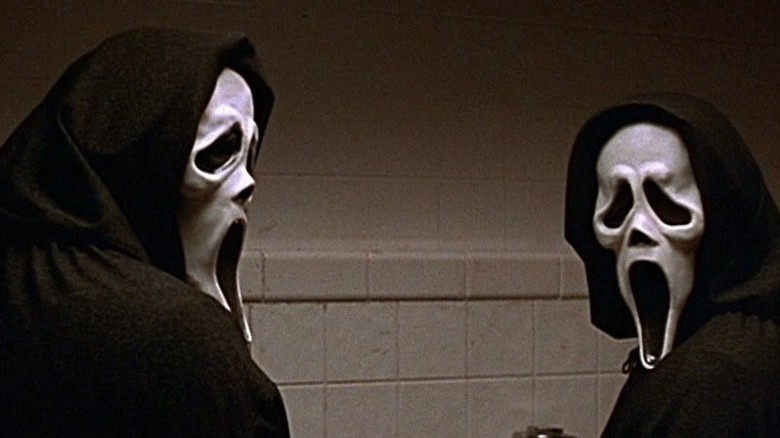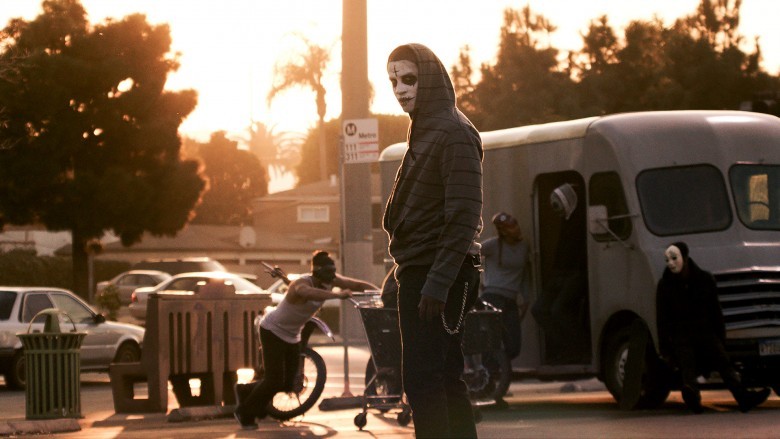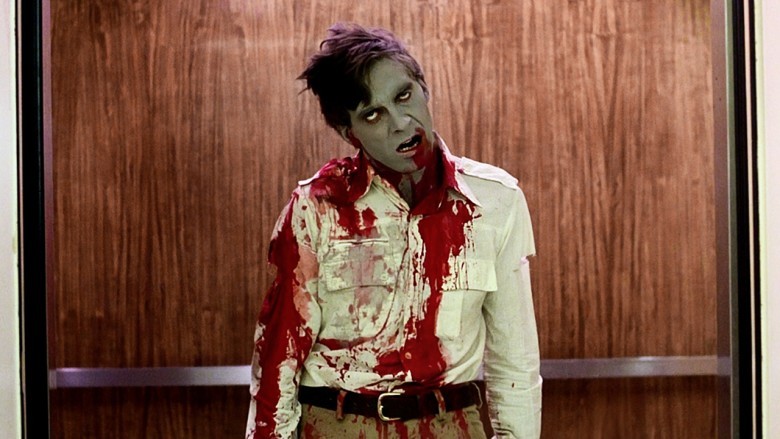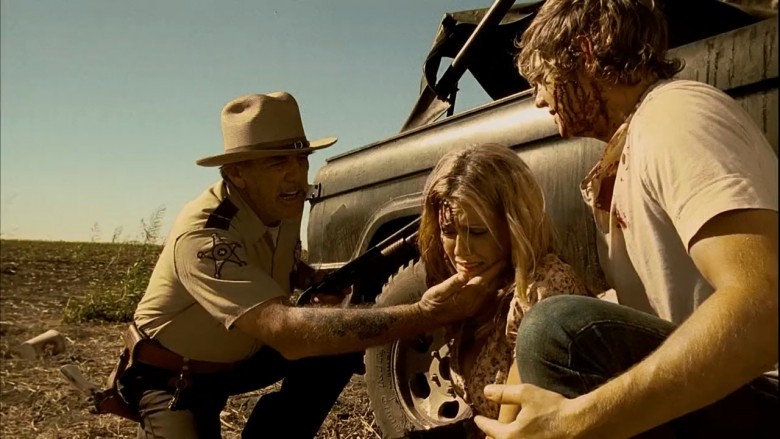Horror Sequels That Were Better Than The Original
More often than not, horror sequels are pretty disastrous. Either they're downgraded ripoffs of the original, wear out what may have been a novel concept to begin with, or resort to extreme gore and/or jump scares to one-up their predecessors and, in the process, cheapen the whole series as a result. That's true of most sequels, really, but it seems especially common in this genre. There are exceptions to every rule, however—and these sequels not only live up to their horrifying predecessors, they're even better.
Evil Dead II
Without The Evil Dead, we would have never been introduced to Ash (Bruce Campbell) and his cabin of horrors (ahem, or that tree), so there's certainly something to be said for the merits of the movie. However, the "re-quel," as Campbell calls it, was a lot campier and more self-aware—and, as a result, more fun. Instead of Ash as the prototypical hero type, he became a lot more humorous and quirky. Sure, this meant the gore got toned down a bit, but it also set a new tone for the series that was much cheekier and far more unique than the first. Evil Ash! "Groovy" Ash! More mania! Evil Dead II cemented the series as a viable franchise, opening the door to another sequel and a spinoff series, and making Campbell a cult hero for the ages.
Friday the 13th, Part 2
While Friday the 13th certainly set a tone for what would become a sprawling series of slasher pics targeting teens, its commitment to realism—that is, having a villain who's a real person, rather than future franchise mainstay Jason Voorhees—meant it wasn't really all that different from any other entry in the "teens running from psycho killer" subgenre. The second movie, however, threw caution to the wind to allow its supervillain his day in the cinematic sun—and it totally paid off. Not only is Friday the 13th, Part 2 eerie and overall well-made, the idea that Jason would be the one to take up his mother's torch and terrorize campers for the next few decades was solid and sustainable. Without this movie, Jason Voorhees wouldn't be such an icon of the horror genre. It's plain unimaginable, really.
The Devil's Rejects
Rob Zombie's House of 1000 Corpses was a shell-shockingly brutal parade of violence and mayhem, and it produced some pretty unforgettable moments of violence that will haunt our nightmares forever—hello, fishboy. But The Devil's Rejects came along and took its trio of nefarious murderers into more recognizable (and thus, terrifying) territory by taking them on the run, showing them tormenting anyone unfortunate enough to be in their path. It might've dialed down the notch on atmospheric creepiness just a hair, but the depravity was downright horrifying. The fact that the movie was so packed with relatable victims made the dread that much more visceral than its predecessor.
Saw II / Saw III
Saw is a modern horror classic. The first movie introduced the "game" and its wicked mastermind John Kramer, a.k.a. Jigsaw, paying special attention to two of his unwitting players as they tried to figure out how to escape and survive his elaborate, creepy trap. Plus, the payoff twist ending was just stellar. The second movie, however, seized on an opportunity to expand Jigsaw's world and featured its own major surprise by introducing Amanda as his protégé.
While the first movie spent an awful lot of time on dialogue between two men in a damp room, the second committed to its puzzle dynamic and got even more creative with its terrifying traps. It was more exciting, interactive with the audience, and offered more insight into who Jigsaw was and what he wanted to accomplish. Saw III, however, really got this series going, by introducing some of Jigsaw and Amanda's own ethical flaws and introducing the start of his big war on authority. The first movie was the kernel of the series, but it took two sequels to really flesh out the point.
Wes Craven's New Nightmare
A Nightmare on Elm Street's original concept—that a boogeyman who haunted dreams could actually kill a person in their sleep—was enough to make anyone afraid of bedtime. But once that storyline was beaten to death with a slew of progressively lamer sequels, franchise mastermind Wes Craven decided to get a little more creative about how to amp up the intrigue and ventured outside of the box for a matryoshka doll-style unpacking of his "fictional" film world. By bringing back his original stars to appear as themselves in an effort to stop the very evil he'd created with the original series, Craven made a smart statement about the industry—and his own place in it—which was self-critical and completely entertaining at the same time. The movie also informed some of his later works—speaking of which...
Scream 2
Scream remains a quotable, delicious piece of '90s slasher history, but its sequel took the property to fascinating new heights. The first installment followed a fairly standard story about a masked killer offing high school students, but there was an element of satisfying self-awareness that set the movie apart. Scream 2 accentuated that aspect by introducing a movie-within-a-movie storyline that winked at its own pop cultural relevance in a charming new way. Sure, one might argue that some of the kill scenes from the first film—namely, Drew Barrymore's Casey in the opening sequence—were simply more thrilling than anything that came after, but the first sequel's subtle statements about itself were refreshingly on point.
The Purge: Anarchy
The Purge paid little attention to the warring world outside of the Sandin residence, so there was a lot of room to grow once the concept of this 12-hour-long annual mayhem bonanza proved to be viable at the box office. The Purge: Anarchy, while still focusing on a select few who struggled to survive the fateful night in question, managed to introduce some of the socioeconomic factors that would invariably be an important part in such a system of disorder. Its parallels to the one-percenter movement set the stage for the third installment, The Purge: Election Year, and also gave way to the wonderful wickedness that would be on display with Purge participants and the vulnerability of those who were stuck in this shattered world. By putting its central players outside the comfort of their own homes, we got to see a lot more of the destruction and fallout from the Purge, and it was a lot more satisfying.
Dawn of the Dead
George A. Romero's Night of the Living Dead is a classic, no doubt about it. It marked the beginning of the zombie film craze and holds up as an esteemed chapter in his filmography. However, Dawn of the Dead, the second installment in his Living Dead series, expanded the first movie's ideas by showcasing the root cause of this epidemic and more narrowly pinpointing Romero's parallels between zombification and American consumerism by having its victims take cover in a shopping mall. The film's juxtaposition of excess and materialism with hopelessness and violence helped define the zombie genre as a whole.
The Texas Chainsaw Massacre: The Beginning
Let's just get this out of the way first: this is not to imply that The Texas Chainsaw Massacre: The Beginning was better than Tobe Hooper's 1974 classic The Texas Chain Saw Massacre. No way, no how. Nothing tops the original there. However, it is better than its direct predecessor, the 2003 reboot The Texas Chainsaw Massacre, for a couple of reasons.
Whereas the first movie in the rebooted franchise was pretty much a faithful remake that added very little to the franchise, The Beginning attempted to do some digging into how and why this cannibalistic family became what they were. The way their backstory developed was clever, it included some of the franchise's best dialogue, and the plot also paid more attention to its societal environment—namely, the Vietnam War and the conscription that plagued a generation's youth. Again, it didn't transcend the original by any stretch of the imagination, but it certainly bested the previous sequels and reboots in the series.
